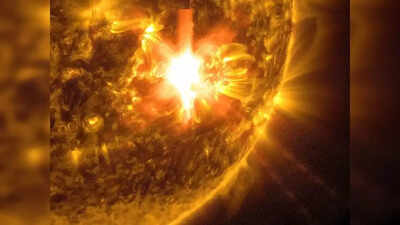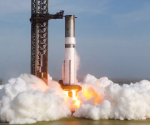NASA issues emergency alert! Solar storms could leave parts of Earth in the dark | – The Times of India

Recent heightened activity on the Sun has raised urgent concerns among scientists and emergency management agencies worldwide. A series of powerful X-class solar flares — the most intense category of solar radiation — has triggered warnings about Earth’s vulnerability to potentially devastating space weather events. These flares have originated from the exceptionally active sunspot AR4087, which has recently become more prominent in the Sun’s visible hemisphere facing Earth.The sequence began with an X1.2-class flare on May 13, 2024, at approximately 11:38 AM, followed by a stronger X2.7-class flare the next day. This second flare caused widespread radio blackouts across vast regions including North and South America, Europe, Africa, the Middle East, and Southeast Asia according to the reports. The extent of these disruptions underscores the tangible impact solar activity can have on global communications and infrastructure
Solar storm drill conducted to test emergency plans amid rising threat
To meet the increasing solar threat, FEMA organized a mass-scale “Space Weather Tabletop Exercise” on May 8, 2024, in Denver, Colorado. This exercise involved coordination with the 140th Wing and 233d Space Group of the US Air National Guard, and major federal agencies like the National Oceanic and Atmospheric Administration (NOAA) and Department of Homeland Security (DHS).The objective of the drill was to provoke an open, no-fault discussion among agencies on the operational and logistical issues of coping with a major solar storm. The exercise modeled events in January 2028, covering different levels of geomagnetic storms, which are induced by coronal mass ejections (CMEs) — enormous eruptions of solar plasma and magnetic fields into space.
Solar superstorm causes big blackouts during the drill
Perhaps the most destructive scenario simulated during the drill was a “solar superstorm” — a gigantic CME that in theory caused a nationwide blackout of the internet, knocked out sections of the US electrical grid, and left large areas of the Eastern Seaboard in extended blackouts.This hypothetical incident also disabled critical infrastructure, such as railways, pipelines, and power grids, resulting in a nationwide breakdown in transportation as well as surging fuel prices. The consequences of such an incident would have monumental economic, social, and security implications. Alongside the ground impact, the drill visualized two Orion spacecraft astronauts traveling to the Moon, as another crew for the Artemis mission had previously landed on the surface of the Moon, contributing to response coordination complexity and urgency.
Solar storm drill reveals major preparedness shortcomings
The exercise revealed critical gaps in understanding, coordination, and response procedures among participating agencies. One of the fundamental issues revealed was the challenge of interpreting and reacting to a coronal mass ejection, which gives a paltry 30-minute window of warning before hitting — an extremely brief lead time in which to mobilize defense or reduce impacts. The Space Weather Operations, Research, and Mitigation (SWORM) task force report highlighted that “space weather is a complex subject, and its potential impacts are not well understood outside of NOAA and NASA.”In addition, organizations were challenged to convert scientific information into actionable measures. There was a significant shortfall in special skills to determine the operational effects of space weather phenomena, and participants recognized training and public communication gaps.
SWORM issues key recommendations to boost solar storm preparedness
Following the simulation, SWORM made swift recommendations designed to strengthen the country’s space weather resilience:
- Investment in enhanced monitoring technologies: Developing and implementing enhanced solar storm detection and early-warning capabilities.
- Increased interagency cooperation: Improving coordination among federal entities, international partners, and private-sector actors.
- Public awareness and education: Educating policymakers and the broader public about solar storm threats and the value of preparation.
- Formal protocols and exercises: Setting effective contingency plans in place and holding frequent simulation exercises, similar to those for natural disasters or cyberattacks.
“Continuous readiness initiatives for a space weather occurrence are imperative,” SWORM said. “A severe event can drastically affect our nation’s essential infrastructure and pose a threat to national security.”Also Read | NASA scientists reveal how trees can predict volcanic eruptions from space
















